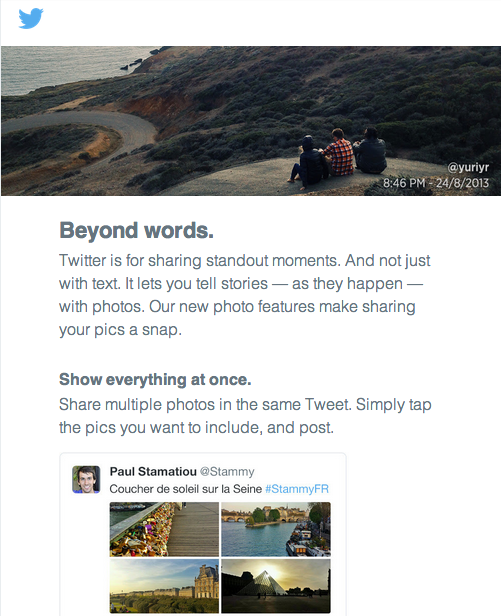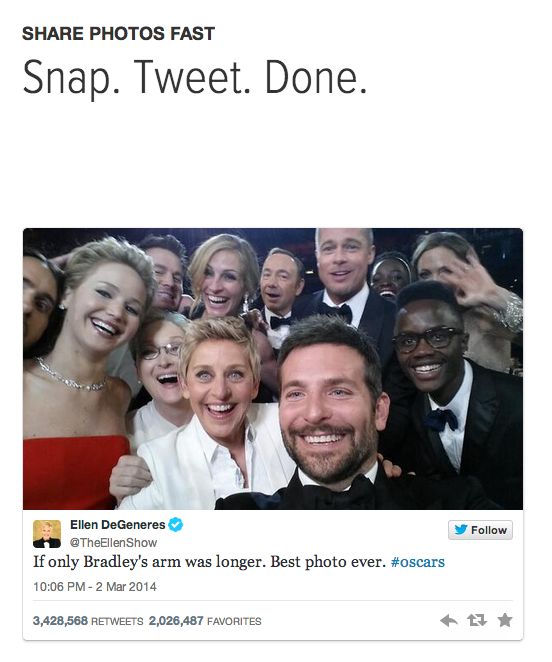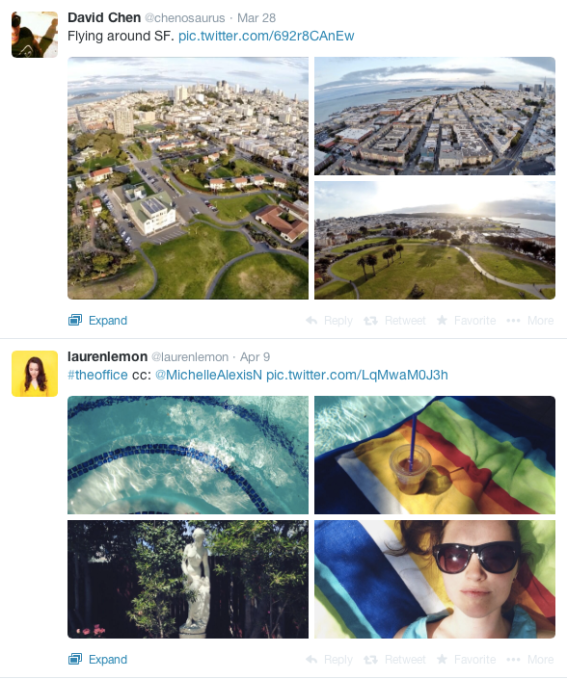Oh Twitter. Time was when you championed the written word. And more than that; the mot juste, as the French say. Papa Hemingway would have been proud of your focus on 140 carefully chosen characters.
Not any more. Not now your stock price is tanking. Now it’s photos you are pinning your hopes on — since photo-sharing continues eating the digital services world.
Facebook is predominantly a place where people share photos now. Instagram always was a photo-focused community. Users of the messaging service WhatsApp, which Facebook also now owns, share more than 600 million photos per day.
And now Twitter is now sending email blasts to its users with the subject line urge to: “Share your best photos on Twitter” — and describing its offering in broad-brush strokes as being “beyond words”.
(Beyond words? Frankly — as a long-time Twitter user who isn’t looking for just another photo-sharing service — words fail me.)

Twitter’s photo-focused email nudge links through to an online section of its website devoted to highlighting its various photo-related tools.
This “ultimate guide to photo sharing on Twitter” explains how quick it is to share photos on the service; flags up Twitter’s built-in photo filters (a la Instagram); points out that users can add multiple photos and people tagging to tweets (a la Facebook); and send photos privately, via its DM feature (a la WhatsApp).
It’s not that the ability to share photos on Twitter is new of course, but this initiative is about educating users what Twitter is for. So basically Twitter is shouting out that it’s FOR all the SAME THINGS you’re already doing on Instagram, Facebook and WhatsApp.
(On the latter point, Twitter has been rebranding its DM feature as a messaging alternative in email notifications to its users for a while now — so instead of saying ‘X has sent you a direct message on Twitter’ its emails read: ‘X wants to chat with you on Twitter’.)
Emphasizing its photo sharing (and messaging) abilities is one way for Twitter to try to ignite a more mainstream user-base, since picture-based communications are such an established digital habit now. Twitter forcing media previews on web users last October was an earlier step in this strategy.

The barrier to entry for the service, with its nerdy legacy nomenclature of hashtags and RTs, undoubtedly continues to remain higher than rival social sharing services — whether that’s Facebook or Instagram or fast-growing messaging apps that also let their users share media like photos.
These sharing alternatives have apparently had a simpler proposition for users to get their heads round, allowing them to grow faster than Twitter.
And that’s a problem for Twitter that’s constraining its growth and having a knock-on effect on its stock price. So all these shifts in tone are about Twitter trying to correct that. To make itself less nerdy, more accessible, more mainstream.
But — in the process — it’s inexorably having to move away from what made it so special in the first place: that focus on 140 characters.
Whether it’s a good strategy to try to turn what was a uniquely interesting service into more of the same remains to be seen. How many services for sharing photos do people really need? But if Twitter can morph into a mainstream photo-sharing/messaging juggernaut then perhaps yes. (And certainly yes from an investor perspective — Twitter is of course answerable to its shareholders now.)
Still, the uniquely different position Twitter holds as a real-time information service — which is incidentally embedded across mainstream media with hashtags organically attached to TV/radio programs and so on — is at real risk of being watered down to irrelevance.
But it’s wagering than the bigger risk here is of Instagram becoming the alternative platform that cannibalizes its growth in future — as Instagram’s monthly usage is posed to outstrip Twitter’s. (The respective MAUs are circa 200M vs 255M.)
And so Twitter is zeroing in on photos.

It’s worth noting that one area Twitter is not currently emphasizing (but could) is its ability to offer anonymous messaging services — a la Whisper or Secret.
Twitter has always been a platform where people can share what they are thinking without being forced to attach their own identity to it. It’s been one of the great freedoms of Twitter that it does not have to involve all the friend list baggage of a service like Facebook.
Twitter users could always set up multiple accounts, to operate different identities, and tweet unselfconsciously into the cyber ether. Anonymous Twitter accounts have thus been part of the furniture for years.
But while startups like Whisper and Secret are generating buzz off of offering anonymous — or ‘anonymish’ — communications, Twitter is busy focusing on the more mainstream habit of photo-sharing as the engine that (it hopes) will drive its business.
